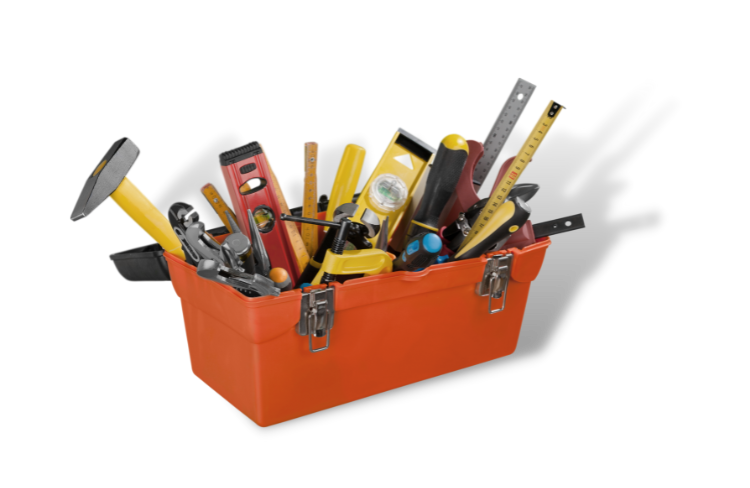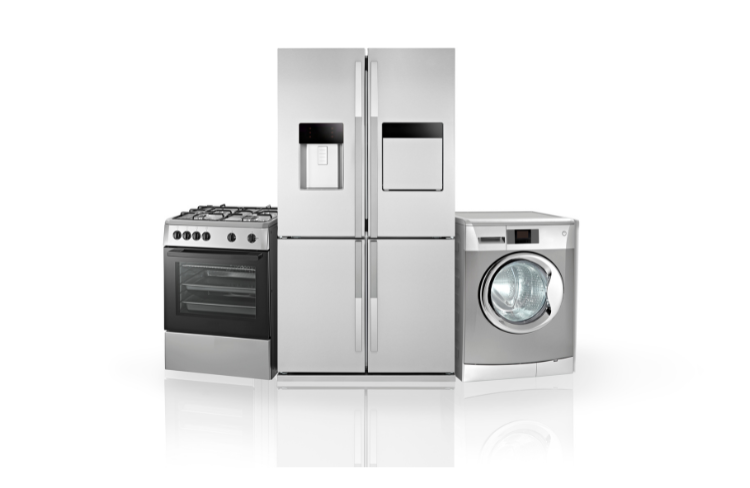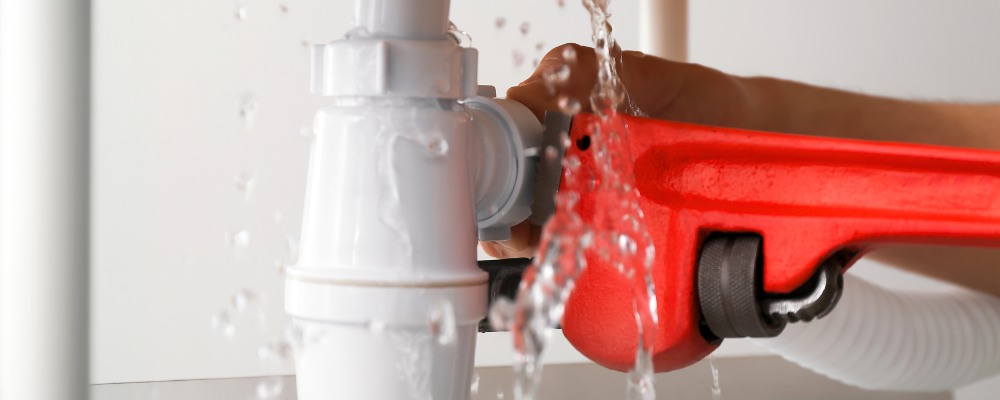Congrats on your new place! Here’s a guide on some ways to pinch those pennies as you learn to balance the budget as a homeowner. There are plenty of reasonable things new homeowners can do to save money. After the initial expense of moving, it may be essential to reign in your spending. Here are fifteen simple and effective ways to manage cash flow in your new home. Read on to learn the TOP 15 Money-Saving Tips for New Homeowners!
TOP ENERGY MONEY-SAVING TIPS FOR NEW HOMEOWNERS

1. Install a programmable thermostat. This ensures that your home isn’t wasting energy heating or cooling during the day while you aren’t home and that you maintain optimal temps inside.
Consider installing a programmable thermostat in your new home. This smart investment allows you to take control of your home’s heating and cooling systems efficiently. With a programmable thermostat, you can set specific temperature schedules based on your daily routine. This ensures that your home isn’t wasting energy by heating or cooling when you’re away during the day.
By programming the thermostat to adjust temperatures according to your schedule, you not only enhance energy efficiency but also contribute substantial cost savings on your utility bills. Achieving optimal temperatures when you’re home and adjusting them intelligently when you’re away, a programmable thermostat becomes a valuable ally in creating a comfortable living environment while being mindful of your budget.
2. Lower the temp on your water heater to 120 degrees Fahrenheit (or 55 degrees Celsius). Bonus: toss a specially-made insulation blanket over your water heater to save even more energy (and money!).
Take a proactive step in reducing your energy consumption and cutting down on utility costs by adjusting the temperature of your water heater. Lowering the temperature to 120 degrees Fahrenheit (approximately 55 degrees Celsius) is a recommended practice. This temperature setting not only ensures a comfortable water temperature for most household needs but also helps prevent excessive energy usage.
Additionally, consider adding an extra layer of energy efficiency by wrapping your water heater in a specially-made insulation blanket. This simple yet effective measure minimizes heat loss, ensuring that the water stays warm without the need for the heater to constantly reheat. The insulation blanket acts as a barrier, preventing heat from escaping and maintaining the water temperature more efficiently.
By implementing both temperature adjustment and insulation, you not only contribute to environmental conservation but also enjoy the bonus of noticeable savings on your energy bills.
3. Check the insulation throughout your home. Getting a pro to add even a little more insulation can be a quick and straightforward way to reduce your monthly energy bill.
Assessing and enhancing the insulation in your home is a strategic move towards achieving energy efficiency and cost savings. Begin by checking the current insulation levels in various areas of your home, including the walls, attic, and floors. Adequate insulation acts as a thermal barrier, preventing heat exchange between the interior and exterior of your home. Consider consulting a professional to evaluate your insulation needs.
An expert can identify areas where additional insulation would be beneficial. Even a small increase in insulation can have a significant impact on maintaining a comfortable indoor temperature without overreliance on heating or cooling systems. Investing in proper insulation not only improves the energy efficiency of your home but also translates to reduced monthly energy bills.
It’s a relatively quick and straightforward solution that pays off in both the short and long term, making your home more environmentally friendly and cost-effective.
4. Wrap exposed water pipes with special pipe insulation. Especially in basements or garages, this can make a difference in water temp.
Enhance the efficiency of your home’s plumbing system by taking a simple yet effective measure – wrapping exposed water pipes with specialized pipe insulation. This practice is particularly beneficial in areas like basements or garages where pipes may be more susceptible to temperature variations. Pipe insulation serves as a protective barrier, preventing heat loss from the water as it travels through the pipes.
In colder environments, this insulation helps maintain a consistent water temperature, preventing pipes from getting too cold and potentially freezing. Additionally, in warmer environments, it can help prevent the water from absorbing excess heat, ensuring a cooler temperature.
By investing in pipe insulation, you not only contribute to the longevity of your plumbing system by reducing the risk of freezing but also make a positive impact on energy efficiency. This relatively easy and cost-effective solution can lead to noticeable improvements in water temperature consistency, all while potentially lowering your energy consumption and associated costs.
5. Check all vents in every room, ensuring that they are clear of obstructions. Go the extra mile and dust them or use a shopvac to get out any debris.
Maintaining proper airflow throughout your home is essential for an efficient heating and cooling system. Take the time to inspect all vents in every room, and ensure they are free of any obstructions. Over time, vents can accumulate dust, debris, or other particles that hinder the smooth flow of air. To optimize the performance of your HVAC system, go the extra mile by not only clearing obstructions but also by cleaning the vents.
Dusting them or using a shop vacuum to remove any accumulated debris can significantly improve the air quality and system efficiency. When vents are clean and unobstructed, air can circulate freely, ensuring that your heating and cooling systems operate at their best. Regular maintenance of vents is a simple yet impactful step in creating a comfortable and energy-efficient home environment.
By promoting unrestricted airflow, you not only enhance the overall efficiency of your HVAC system but also potentially reduce energy consumption and associated costs.
TOP MAINTENANCE MONEY-SAVING TIPS FOR NEW HOMEOWNERS

6. Do a full investigation of all of the home repair/service providers in your area. Get reviews for plumbers, electricians, HVAC techs, and more. Create a shortlist so you have easy access to the best people when you need them.
Conducting a comprehensive assessment of home repair and service providers in your local area is a proactive measure that can save you time, money, and stress in the long run. Start by researching and gathering reviews for essential services such as plumbers, electricians, HVAC technicians, and other home repair professionals. Online platforms, community forums, and review websites can be valuable resources to collect feedback from previous customers.
By creating a shortlist of the most reputable and well-reviewed service providers, you establish a go-to resource for any future home repair needs. This proactive approach ensures that you have easy access to reliable professionals when emergencies or maintenance requirements arise. Having a trusted network of skilled professionals at your fingertips not only streamlines the process of finding help but also increases the likelihood of receiving quality service.
Investing time in researching and vetting home service providers upfront is a prudent strategy that pays off when you need timely and reliable assistance, ultimately contributing to the overall efficiency and peace of mind in homeownership.
7. Simplify the landscaping. Figure out which plants are most resilient and require the least care. Set a schedule for weeding and mulching.
Streamlining your landscaping not only enhances the aesthetic appeal of your property but also contributes to a more manageable and cost-effective outdoor environment. Begin by identifying plants that are hardy and require minimal care, selecting those that are well-suited to your climate and soil conditions. Opting for resilient plants can significantly reduce the time and resources needed for maintenance.
Establishing a regular schedule for weeding and mulching is a key component of efficient landscaping. Weeding helps maintain a clean and tidy appearance, preventing invasive plants from taking over and reducing the competition for nutrients. Mulching, on the other hand, serves multiple purposes, including moisture retention, weed suppression, and temperature regulation for the soil.
By simplifying your landscaping and adopting a proactive approach to maintenance, you not only create an aesthetically pleasing outdoor space but also minimize the time and effort required to keep it looking its best. This approach aligns with sustainable and cost-effective landscaping practices, contributing to a more enjoyable and low-maintenance outdoor living environment.
8. Upgrade caulking. Not only will caulking around windows and doors keep temps from leaking, it will also protect the corners of appliances and plumbing from unwanted moisture.
Upgrading caulking around windows and doors is a practical and effective measure that serves both energy efficiency and protection purposes. By sealing gaps and cracks with high-quality caulking, you create a barrier that prevents temperature leaks, ensuring that your home remains well-insulated. This is particularly crucial for windows and doors, where drafts can compromise the indoor climate and lead to increased energy consumption for heating or cooling.
Furthermore, caulking acts as a protective shield for the corners of appliances and plumbing fixtures, safeguarding them against unwanted moisture. Moisture can be a source of various issues, including mold growth, corrosion, and degradation of materials. By maintaining a secure caulking barrier, you mitigate the risk of moisture infiltration, thereby preserving the integrity of your appliances and plumbing components.
Investing in caulking upgrades is a relatively simple yet impactful home maintenance task. It not only helps in energy conservation by sealing air leaks but also contributes to the overall durability and longevity of your home infrastructure, making it a valuable step in both energy efficiency and property preservation.
9. Make a seasonal checklist for checking on or cleaning certain items. This includes things like checking appliances for wear and changing out air filters. Getting ahead of regular, needed maintenance will keep you from spending a ton of money in the long run.
Creating a seasonal checklist for routine maintenance tasks is a proactive strategy that can save you both time and money while ensuring the longevity of your home’s essential systems. By systematically checking and cleaning specific items at different times of the year, you stay ahead of potential issues and prevent the need for costly repairs. Include tasks such as inspecting appliances for signs of wear and tear and changing out air filters in your seasonal checklist.
Regularly assessing the condition of appliances allows you to identify any emerging issues early on, addressing them before they escalate into more significant problems. Changing air filters, on the other hand, ensures optimal performance of your HVAC system, improving energy efficiency and indoor air quality.
By staying ahead of these routine maintenance tasks, you not only extend the lifespan of your appliances and systems but also avoid the financial burden associated with major repairs or replacements. A well-organized seasonal checklist becomes a proactive tool, helping you maintain a functional and efficient home while managing costs effectively over time.
10. Did you know that not all gutters are set up correctly? Improperly directed or installed gutters can cost you big time if water damage occurs. Inspect your gutters in a new home before the rainy seasons hit.
Creating a seasonal checklist for routine maintenance tasks is a proactive strategy that can save you both time and money while ensuring the longevity of your home’s essential systems. By systematically checking and cleaning specific items at different times of the year, you stay ahead of potential issues and prevent the need for costly repairs. Include tasks such as inspecting appliances for signs of wear and tear and changing out air filters in your seasonal checklist.
Regularly assessing the condition of appliances allows you to identify any emerging issues early on, addressing them before they escalate into more significant problems. Changing air filters, on the other hand, ensures optimal performance of your HVAC system, improving energy efficiency and indoor air quality.
By staying ahead of these routine maintenance tasks, you not only extend the lifespan of your appliances and systems but also avoid the financial burden associated with major repairs or replacements. A well-organized seasonal checklist becomes a proactive tool, helping you maintain a functional and efficient home while managing costs effectively over time.
TOP SWAPS: MONEY-SAVING TIPS FOR NEW HOMEOWNERS

11. Replace all light bulbs (even outside ones) with LEDs. These energy-efficient options are also a major cost-saver and will last for years.
Opting to replace all light bulbs, including those outdoors, with LEDs is a smart and cost-effective move for both energy efficiency and long-term savings. LED (Light Emitting Diode) bulbs are renowned for their energy efficiency, consuming significantly less electricity than traditional incandescent bulbs. This not only lowers your energy consumption but also translates into substantial cost savings on your electricity bills over time.
One of the key advantages of LEDs is their longevity. These bulbs have an impressive lifespan, often lasting for several years before needing replacement. This extended lifespan not only reduces the frequency of bulb changes but also decreases the overall maintenance costs associated with lighting.
By making the switch to LEDs, you contribute to environmental sustainability through reduced energy consumption, and you also enjoy the practical benefits of long-lasting, cost-efficient lighting. It’s a simple yet impactful upgrade that positively impacts both your budget and the overall energy efficiency of your home.
12. Quality ceiling fans will save energy and help you manage the temps inside your home. The initial investment is a swap that will pay off big in the long run.
Investing in high-quality ceiling fans is a strategic decision that not only enhances the comfort of your home but also contributes to long-term energy savings. Quality ceiling fans are designed to efficiently circulate air, creating a more comfortable indoor environment and allowing for better temperature management. During warmer months, ceiling fans can create a cooling effect, enabling you to set your thermostat higher and reduce the workload on your air conditioning system.
In colder months, reversing the fan direction can help distribute warm air more evenly throughout the room. While there may be an initial investment in purchasing quality ceiling fans, the long-term benefits are substantial. The energy savings achieved by using ceiling fans can result in lower utility bills, offsetting the upfront cost over time.
Additionally, the durability and efficient performance of high-quality fans reduces the need for frequent replacements, adding to the overall cost-effectiveness of this investment. In summary, upgrading to quality ceiling fans is a smart swap that pays off in the long run, providing both energy efficiency and lasting comfort for your home.
13. Put your sprinkler system on irrigation control. Swapping out an old-school system with an automated one can save you thousands of gallons of water a year.
Implementing irrigation control for your sprinkler system is a forward-thinking solution that not only simplifies your landscaping routine but also delivers significant water conservation benefits. By upgrading from an old-school manual system to an automated one, you gain the ability to schedule watering times, durations, and frequency more efficiently.
Automated irrigation control ensures that your lawn and plants receive the right amount of water without unnecessary waste. This precision in watering can result in substantial water savings, potentially amounting to thousands of gallons per year. The system can be programmed to adjust based on weather conditions, preventing overwatering during rainy periods and optimizing irrigation during drier spells.
While there may be an initial investment in installing an automated sprinkler system, the long-term water savings contribute to cost-effectiveness and environmental sustainability. Additionally, the convenience of automated control simplifies your landscaping maintenance, allowing you to enjoy a healthy and well-maintained outdoor space without the need for constant manual adjustments.
14. Swap outdoor sweeps, especially to external doors. This will keep your home from losing a ton of heated or cooled air.
Upgrading outdoor sweeps, especially on external doors, is a practical measure that plays a crucial role in maintaining the energy efficiency of your home. Outdoor sweeps, also known as door sweeps or weatherstripping, serve as a protective barrier against the loss of heated or cooled air. By replacing or upgrading these sweeps, you enhance the sealing of external doors, preventing drafts and ensuring more effective insulation.
The primary purpose of outdoor sweeps is to create a tight seal at the bottom of the door, minimizing air leaks and temperature exchange. This is particularly important for external doors, where drafts can significantly impact the indoor climate and strain heating or cooling systems. A well-fitted outdoor sweep acts as a simple yet effective solution to mitigate energy loss, enhancing the overall efficiency of your home.
While the swap of outdoor sweeps requires a relatively small investment, the resulting benefits in terms of energy conservation can be substantial. By preventing the unnecessary loss of conditioned air, you not only improve the comfort of your living space but also contribute to cost savings on your energy bills over time.
15. Swap out any of your old appliances with new, energy-efficient ones. You may save hundreds, even thousands of dollars a year on bills and won’t run the risk of an emergency replacement or repair.
Upgrading your old appliances to new, energy-efficient models is a strategic investment that yields both immediate and long-term benefits. Newer appliances are designed with advanced technology and energy-saving features, offering increased efficiency and reduced energy consumption. By making this swap, you have the potential to save hundreds or even thousands of dollars annually on utility bills, as energy-efficient appliances operate more economically.
Beyond the financial advantages, upgrading to energy-efficient appliances minimizes the risk of emergency replacements or costly repairs associated with older, less reliable models. Modern appliances often come with extended warranties and are built to higher standards, providing increased durability and reducing the likelihood of unexpected breakdowns.
While there is an upfront cost to replacing appliances, the long-term savings, improved energy efficiency, and peace of mind make it a prudent investment. This proactive approach not only positively impacts your budget but also aligns with sustainable living practices by reducing overall energy consumption and minimizing the environmental footprint of your household.
Click HERE to download your FREE GUIDE!
Hope you got some useful tips for how you can save money! Are you just prepping for your future as a homeowner? If you’re in the market (or ever need to sell) give me a shout. I’ll help you out!
Let’s Connect! Have questions, or stories to share, or seeking personalized advice? Let’s connect on social media. Your journey is unique, and I’m here to support you every step of the way.
FROM NAVIGATING THE COMPLEXITIES OF THE MARKET TO PROVIDING GUIDANCE, I AM HERE TO STREAMLINE THE SELLING OR BUYING PROCESS FOR YOU. LET’S TURN YOUR REAL ESTATE GOALS INTO REALITY—CONTACT ME TODAY, AND LET’S BEGIN THIS JOURNEY TOGETHER! 909-552-8777







Leave A Comment